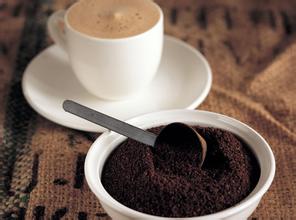Classification and characteristics of Coffee varieties with large Grain
Classification and characteristics of Coffee varieties with large Grain
Also known as Liberian species, evergreen trees. The plant is tall, more than 10 meters high, the branches are thick and hard, grow obliquely upward, and the branches cork the fastest. The leaf blade is oval or round, the leathery leaf surface is glossy, the leaf end is closed, and the leaf margin is not corrugated. The fruit is large, oblong, the skin and pulp are hard and thick, the navel is large and protruding. The ratio of fresh fruit to dried bean is about 7: 10. The seed shell is thick, hard and tough, the seed coat is close to the seed kernel, the bean grain is large, and there are about 1300 beans per jin. The ripe fruit is scarlet. The branches bear less fruit, and the number of fruits per node is about 5-6. The main root of this species is deep, drought-resistant, wind-resistant, cold-resistant, light-resistant, and most susceptible to rust. The yield per plant is high and the yield per unit area is low. Strong flavor and strong irritation.
The main varieties are Esselsa (also called Charley), which was introduced from Guangxi to Hainan in the 1970s. The fruit is vigorous, but the seed coat is thick and hard like a small seed, the ratio of fresh to dry is 5: 8, and the quality is strong and slightly bitter. Deep roots, strong drought and cold tolerance, resistance to leaf rust and longicorn beetles
Also known as Arabian species, native to Ethiopia, evergreen shrubs. The plant is small, 4-5 meters high, the branches are slender, and the branches are corked earlier. The leaf is small and pointed, long oval, harder than the middle seed, and the ripple on the leaf margin is fine and obvious. The fruit is smaller, the ratio of fresh fruit to dried bean is 4.5 to 5, the exocarp of the seed is thick and tough, the seed coat is thick, and it is easy to separate from the kernel. The seeds are smaller, about 1700 to 2600 per jin of coffee beans, and the number of fruit per node is less, about 1215, but the number of branches is more, so under the condition of good management, the yield is not lower than that of medium seeds. Coffee powder tastes mellow and has good drinking quality. The plant is wind-resistant, drought-resistant and cold-resistant, but rarely infected with rust, high yield, strong flavor and strong irritation. Among them, the famous varieties are Romasta species, Quilong species, Ugandan species and Indonesian clones BP38, BP42, East Java high-yielding species Bgn300, Bgn124 and so on.
In recent years, eight high-yielding clones were selected from the seed trees of the Flavor Beverage Research Institute of the Chinese Academy of Tropical Agricultural Sciences. after years of experiments, it was proved that the yield was 3-4 times higher than that of the existing trees, and the yield of dried beans per mu was 150-200 kg. It can be popularized and planted in Hainan Province.

Important Notice :
前街咖啡 FrontStreet Coffee has moved to new addredd:
FrontStreet Coffee Address: 315,Donghua East Road,GuangZhou
Tel:020 38364473
- Prev

Sulawesi coffee the origin of Kenyan coffee beans Chinese coffee brands
Sulawesi Coffee the origin of Kenya coffee beans Chinese coffee brand Mantenin coffee beans have large particles and hard beans, and are prone to defects in the process of planting, which are usually subject to strict manual selection after harvest, if the control process is not strict enough. It is easy to cause a mixture of good and bad quality, and different baking degrees will directly affect the taste, so it has become a controversial single product. Mann
- Next

What is the relationship between altitude and coffee beans the relationship between altitude and temperature
What is the relationship between altitude and coffee beans the relationship between altitude and temperature coffee beans grown in high altitude areas are hard, dense and have the potential to give full play to their special flavor. The really amazing coffees are grown between 4000 and 6000 feet above sea level, and these beans are picked carefully only during the mature season. The rating of Central American coffee is based on the altitude at which the coffee grows.
Related
- What brand of black coffee is the most authentic and delicious? what are the characteristics of the flavor of the authentic Rose Summer Black Coffee?
- Introduction to the principle and characteristics of the correct use of mocha pot A detailed course of mocha pot brewing coffee is described in five steps.
- Which is better, decaf or regular coffee? how is decaf made?
- How much is a bag of four cat coffee?
- How about four Cat Coffee or Nestle Coffee? why is it a cheap scam?
- Which is better, Yunnan four Cats Coffee or Nestle Coffee? How about cat coffee? is it a fake scam? why is it so cheap?
- How about Cat Coffee? what grade is a hoax? which instant coffee tastes better, four Cat Coffee, Nestle Coffee or G7 coffee?
- Process flow chart of coffee making-Starbucks coffee making process what coffee tastes good at Starbucks
- The top ten best coffee beans in the world Rose summer coffee or Tanzanian coffee tastes good
- Yunnan four cat coffee is good to drink?_four cat coffee is a big brand? four cat blue mountain coffee is fake?

